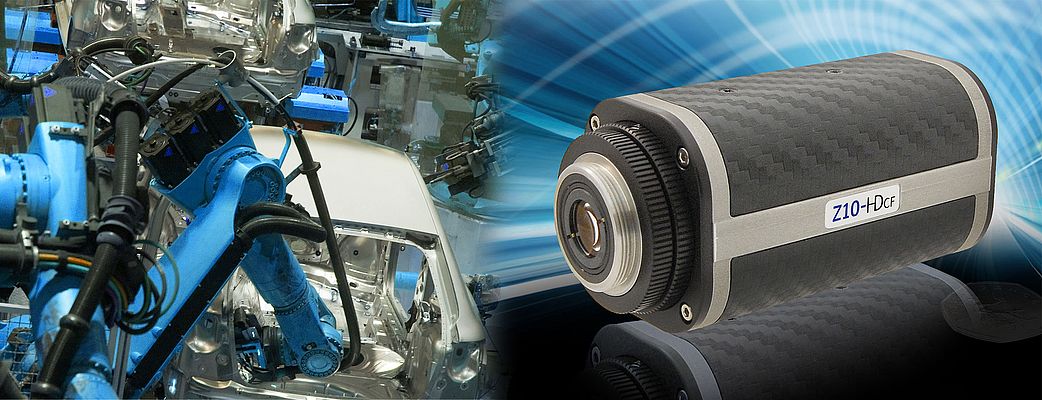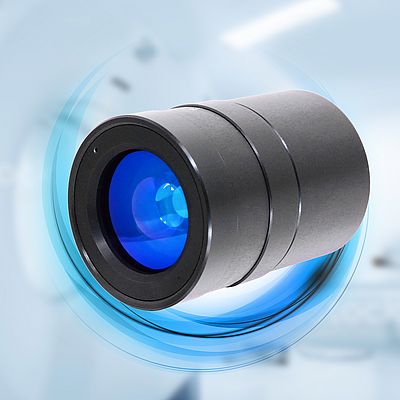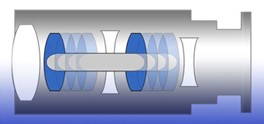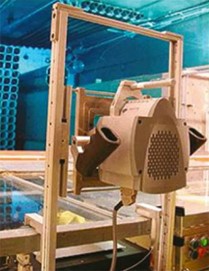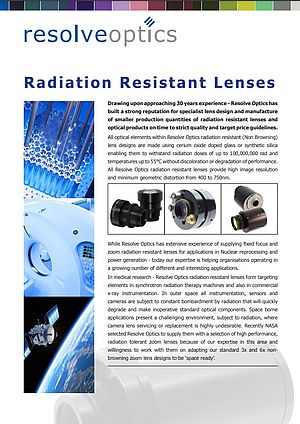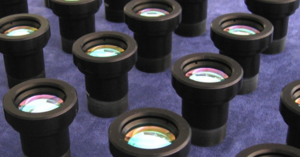IEN Europe: The trend is for cameras and sensors to offer ever increasing resolution, what role does the lens fulfil in these devices and are suitable lenses generally available?
Mark Pontin: The performance of a high-resolution camera or sensor is only as good as the information provided to it. In an optical system this is the function of your lens. If the resolution delivered by a lens is too low, then no matter how many Mega pixels your sensor is your image will be poor.
The availability of suitable off-the-shelf lenses depends on your application and whether your sensor/camera conforms to a standard format such as 1/3-inch or 2/3-inch. Typically Off the shelf lens manufacturers cater just for mass markets so they are generally quite slow to follow new emergent trends such as multi-megapixel cameras and sensors.
While Off the shelf lenses will be suitable for many applications their use will often require a compromise in terms of achievable performance, field of view or aperture and in some cases all of the above.
IEN Europe: You are a developer of custom lenses for many industry sectors, which sectors in particular are adopting multi-megapixel cameras and sensors or is this a general industry trend?
Mark Pontin: Yes, this is a general industry trend. Everyone wants higher and higher resolution. This can be driven by a need for greater image detail for example in machine vision but it is also driven by the desire to have the latest technology i.e. sensors and cameras with higher and higher resolution.
IEN Europe: How can a customized lens help to exploit the full capabilities of a camera or sensor system?
Mark Pontin: The drive for higher resolution devices has necessitated that sensor formats are becoming larger, for megapixel cameras this often means greater than than 1-inch format. Off-the-shelf lenses for these new larger formats are generally not available. Consequently, a custom designed lens is the best solution to enable you to maximize the potential of your HD or ultra HD camera. Using such an optimized custom lens will ensure that the lens will not be a bottleneck on achievable image quality. Where Resolve Optics has already developed expertise we can use this to tailor our custom design to meet the exact needs of your application which may enable costs to be reduced.
The point to remember is that the lens provides the image quality. If that image quality is not provided, you can have the best camera available but you will still have poor images.
IEN Europe: There is also the trend of moving away from standard sensor formats. What effects can this have to the lens/camera system and how does it show in your work?
Mark Pontin: We have touched on this question earlier. To achieve greater resolution (more pixels) camera sensors have had to grow in size. As this is an emerging trend inevitably there will be a shortage of suitable off-the-shelf lenses that cover the desired larger formats and have the required resolution. As a company specializing in OEM lens design, development and manufacture for nearly 30 years we have the expertise, experience and flexibility to be able to quickly produce custom lenses to allow you take advantage of the new large format, higher resolution image sensors.
IEN Europe: Different applications often require camera/sensors to work in different environmental conditions – how do you allow for this in your lens designs?
Mark Pontin: Resolve Optics is experienced in supplying lenses for hazardous and extreme environments. When we are approached to discuss a custom lens design the first thing we do is to truly understand the customer’s application and the environment that the lens will be expected to work in. This could include environmental factors ranging from radiation resistance to extremes of temperature and pressure or to withstand high levels of vibration and shock. Our experience and expertise in creating optical and mechanical designs that meet or exceed the challenges laid out in a customer’s specification has enabled us for instance to become a world leader in radiation resistant fixed focus and zoom lenses.
IEN Europe: So, we have learned that custom lenses can do a lot to solve specific problems compared with standard products. But how big are the investments a customer must deal with and what about the development time?
Mark Pontin: The cost of design and development really depends on the customer’s application and the complexity of the design that is required to meet those needs. If we are talking about a custom fixed focus lens design then generally we would design, develop and supply 5 off prototypes for less than you would pay for one high-end megapixel camera. After the prototypes have been approved the reduced unit cost of the production lenses is dependent on the quantities ordered.
Design through to supply of prototype will generally take between 4 to 6 months for fixed focus lenses and from 12 to 18 months for zoom lenses. These times are based on completely new designs.
IEN Europe: Thank you for sharing these insights with our readers. Please could you also give an example of a ‘real world’ application and the problems solved by a Resolve Optics custom lens?
Mark Pontin: Recently Resolve Optics developed and supplied a custom 24mm diameter fixed focus radiation resistant lens to a market leader in radiotherapy equipment. The radiotherapy equipment supplier sought a high-resolution lens able to withstand, and precisely focus, the high levels of radiation produced by their synchrotron device onto tumors. As increasing numbers of people require radiotherapy as a key part of their cancer treatment, there is a need for treatment delivery systems that can deliver precise and accurate care quickly. Using cerium-doped glasses, we produced a compact f/2.8 lens able to withstand long-term exposure to radiation up to a dose of 100 million radians without discoloration. This new lens is enabling the customer to improve the precision radiotherapy treatment of tumors that its equipment provides.


